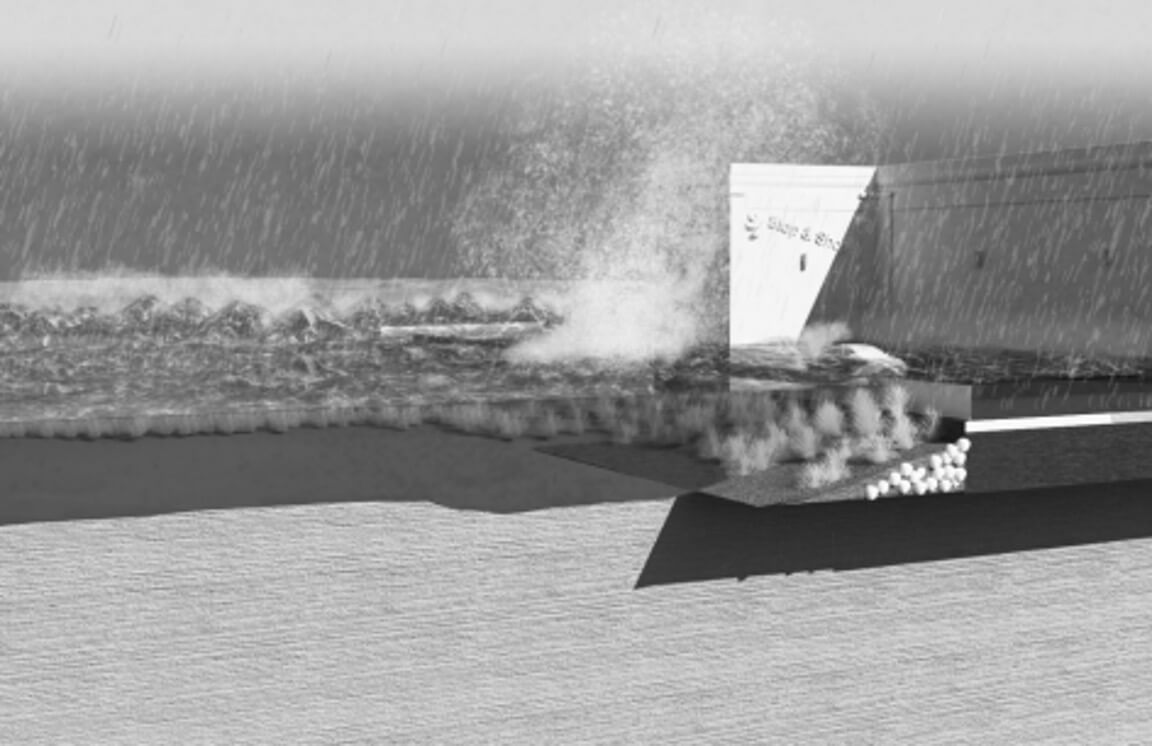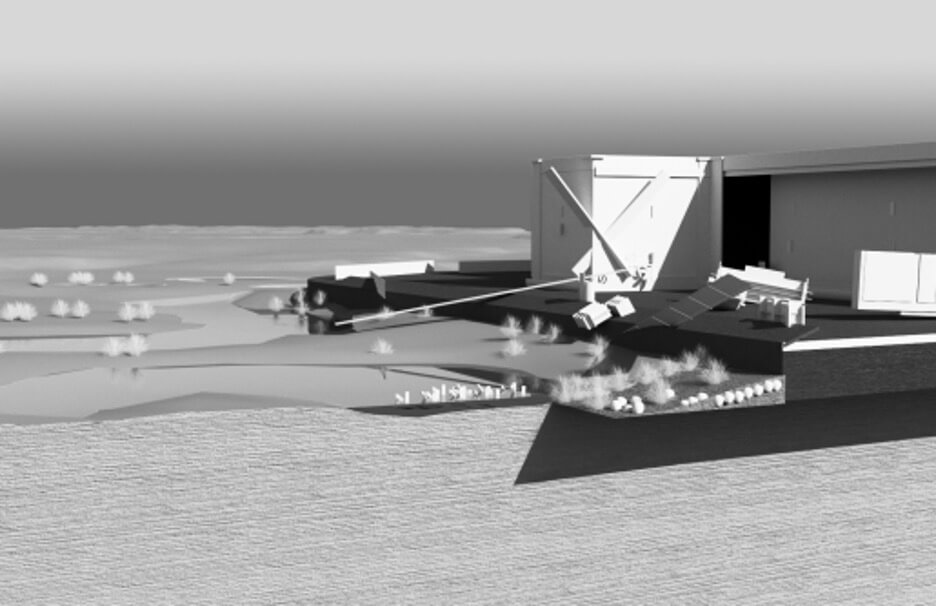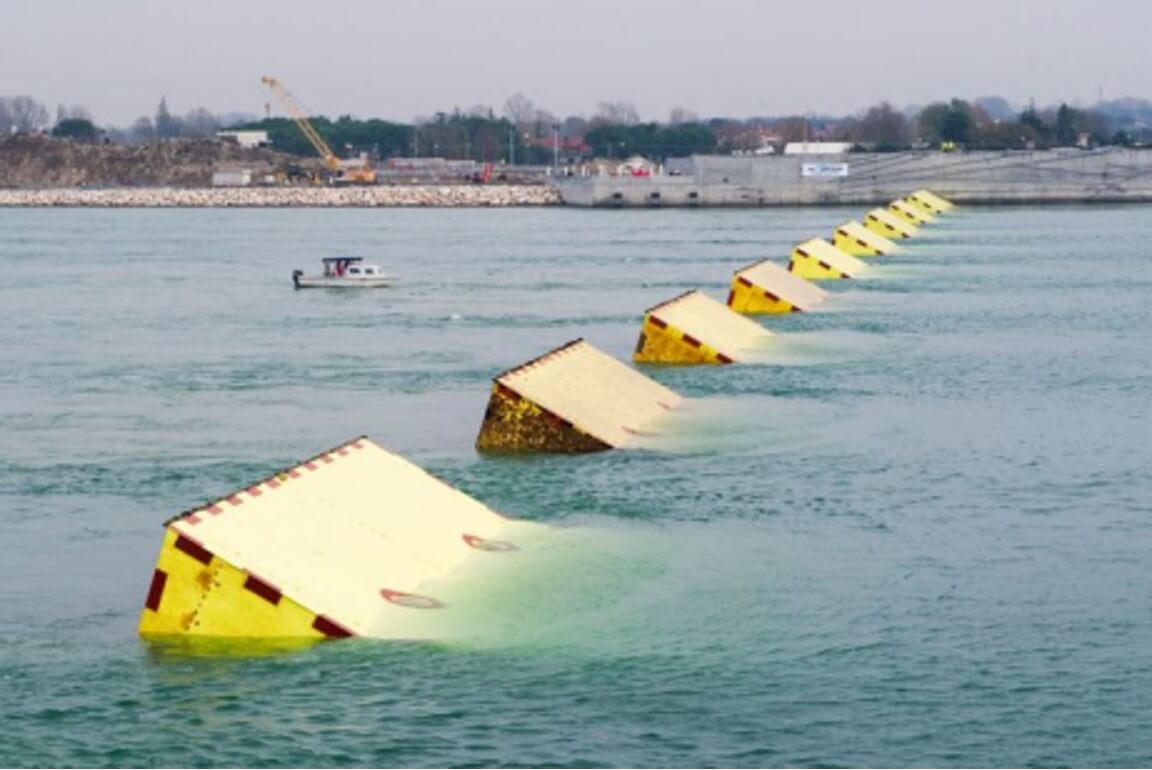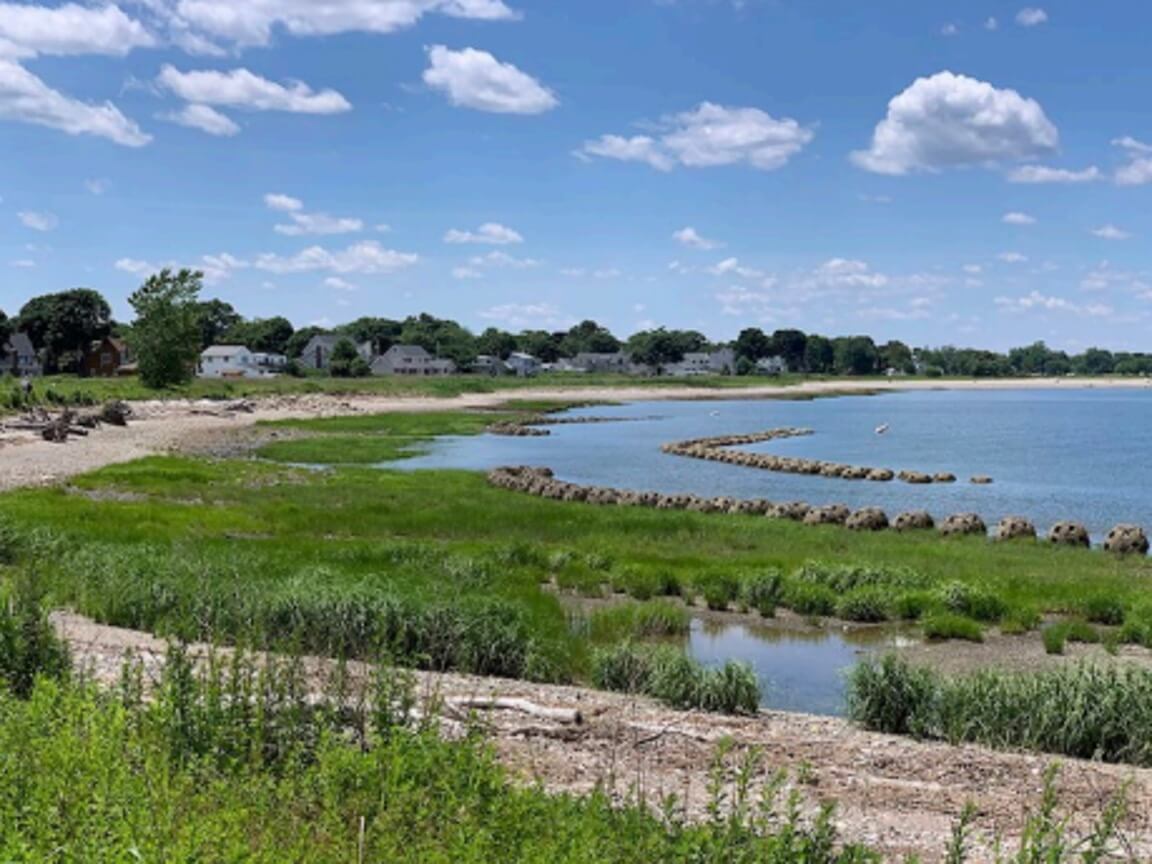Voices Interviews are Underway and The Great Storm Scenario shows Stop and Shop Plaza Damage
The Great Storm of 2038 Scenario shows significant damage to Stop and Shop Plaza
The TownGreen-sponsored Harvard University Graduate School of Design (HGSD) Climate Study researchers are continuing their assessments of the impacts of a Category 3 Hurricane and exploring coastal communities adaptation measures from around the world.
This month, TownGreen is releasing images from the HGSD Climate Study highlighting damage to Stop and Shop Plaza in East Gloucester. The two images shown below (before and after) depict expected flooding damage to the loading dock located in the back left corner of the Stop and Shop building.

Source: “Stop and Shop during the Great Storm of 2038,” Typologies of Vulnerability: The Case of Cape Ann; Harvard GSD Office for Urbanization, 2022.

Source: “Stop and Shop after the Great Storm of 2038,” Typologies of Vulnerability: The Case of Cape Ann; Harvard GSD Office for Urbanization, 2022.
Stop and Shop Plaza was built on part of the Good Harbor Beach salt marsh ecosystem, which historically was connected to Gloucester Harbor. Stop and Shop Plaza is at the corner of Bass Avenue and Thatcher Road, which connects East Gloucester to Rockport. The hurricane’s arrival will bring a storm surge of potentially 18 feet. It is expected that the berm that the Plaza is constructed on will erode. Flooding related to the hurricane will cause the Stop and Shop building to sink into its foundation. When Thatcher Road floods, the emergency evacuation route for East Gloucester and Rockport will be impeded.
Resistance to Storms and Flooding
TownGreen’s next scenario, Adaptation: Armoring Infrastructure and Managed Relocation, envisions the effects of armoring Cape Ann’s coast by protecting infrastructure threatened by sea level rise and inundation with hard infrastructure and living shorelines and other natural system protections and imagines relocation for the most vulnerable flood and storm surge zones.
HGSD researchers are assembling case studies that provide details and examples of resistance, accommodation, and avoidance of coastal threats caused by sea level rise, flooding, and storms. Two examples that protect existing coastal assets are the MOSE flood barrier in Venice, Italy (hard infrastructure project) and the Living Shoreline off Stratford Point in Stratford, Connecticut (soft infrastructure project).
Flood Barriers
MOSE is a semi-permeable steel flood barrier that is deployed at three entry points to the Venice lagoon. These adjustable gates can eliminate storm-surge flooding without significant environmental impacts. Each barrier is 30 meters long and 20 meters wide, embedded in concrete chests under the lagoon. The barriers are designed to be invisible during dry conditions. During flooding and storm events, the barriers are raised with air. At other times they are filled with water and sink beneath the surface of the water. The project is controlled by an artificial island and a team of 100 engineers and technicians carefully monitors and maintains it. The barriers are effective for sea level rise or storm surge greater than 10 feet. The MOSE project has cost $6,160,124 to date.

“The MOSE project may not be enough to keep the city dry,” Awakening/Corbis, Curbed, 2020.
Living Shorelines
Living breakwaters incorporate natural habitat components, like oysters or mussels, to blunt the force of storm surges. The Stratford Point Living Shoreline Project in Stratford, Connecticut uses precast reef balls at mean-tide elevation of 75 feet offshore and is supplemented by the restoration of low and high marshes and the dune behind the reef. The project is supplemented by meadow mosaic and coastal forest planting. The project was led by a restoration team of land managers, restoration ecologists, and environmental engineers who studied the local bathymetry, wind, and wave trajectory, sediment loads and the causes of erosion. The reef balls provide habitat for oysters. Built in 2010, the project has cost $455,000 to date.

“Sacred Heart University Living Shoreline,” Joseph Sullivan, 2020.
What’s next
HGSD researchers will assess the potential and viability of these types of projects for Cape Ann coastal areas in terms of effectiveness and cost. Our next update will describe examples of accommodation, such as elevation of buildings and infrastructure, and managed relocation out of high-hazard zones that GSD has researched. Some of these may be particularly appropriate for Cape Ann communities to consider.
The Voices of Cape Ann Project Update
HGSD Ethnographic Study Underway
The Harvard Graduate School of Design ethnographic study led by Professor Gareth Doherty is underway. The two graduate students arrived in early February to start their interview work on Cape Ann and will be active through April. The graduate students have already visited Rockport and Gloucester and will have a regular rotation in all four Cape Ann communities. For more details see the December 2021 newsletter.
Community Teams and Interviewers are Starting Interviews
The Voices Project Steering Committee has assembled a talented group of volunteers who will interview Cape Ann residents. There is a local team for each community with the goal of gathering input from a diverse group of people including residents from different socioeconomic backgrounds; seniors and students; fishermen, clammers, and lobstermen and women; representatives from different ethnic groups, such as the Portuguese, Brazilian, Sicilian, Black, Hispanic, and Asian communities; and parents with small children. If you are interested in being interviewed, please contact the representatives below. You will sign up for two interviews, one in March and another in April. The first interview will ask you about why you live in your community and what you love about it. The second interview will ask you about the impacts of climate change and record your concerns. Please sign up by March 8th.
Gloucester: Dick Prouty, TownGreen Board Chair at dick.prouty@gmail.com
Rockport: Herman Lilja at herman.lilja@gmail.com
Manchester-by-the-Sea: Greg Federspeil at federspielg@manchester.ma.us
Essex: Maureen Aylward at maureenaylward22@gmail.com
Spring 2022 EPA Workshops
Two EPA Building Blocks for Sustainable Communities workshops are planned for April and May with Cape Ann municipal and civic leaders, stakeholders, and citizens. More information will be forthcoming on how Cape Ann residents can participate. The April EPA workshop will incorporate findings from the communities’ Municipal Vulnerability Preparedness (MVP) plans (see Gloucester’s plan) and the HGSD Great Storm of 2038 scenario. The May EPA workshop will prioritize identified potential infrastructure and managed retreat solutions that will be followed by an EPA analysis of potential funding sources and strategies for adaptation priorities.
Coming in April and May 2022
Professor Charles Waldheim will present findings of GSD research later in the spring.
For more information or questions, contact Dick Prouty, TownGreen Board President, at dick.prouty@gmail.com; 508-284-2046.


